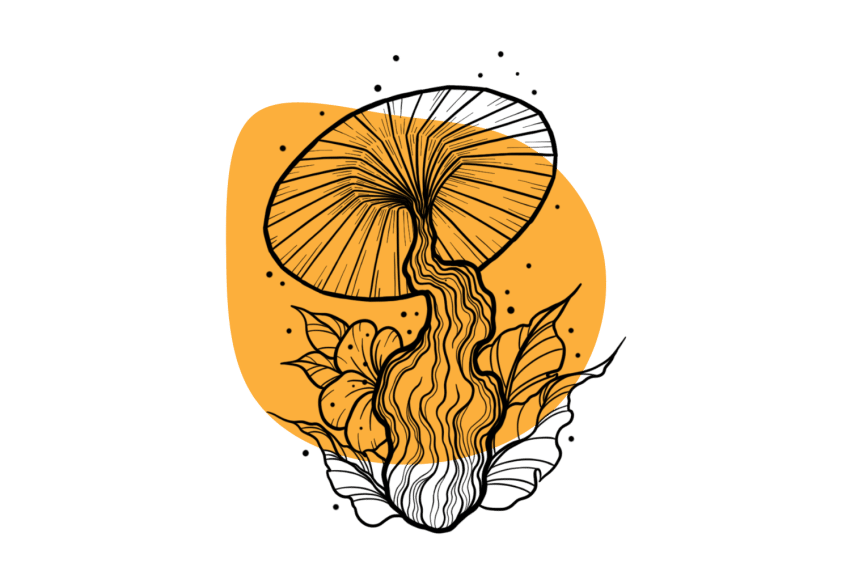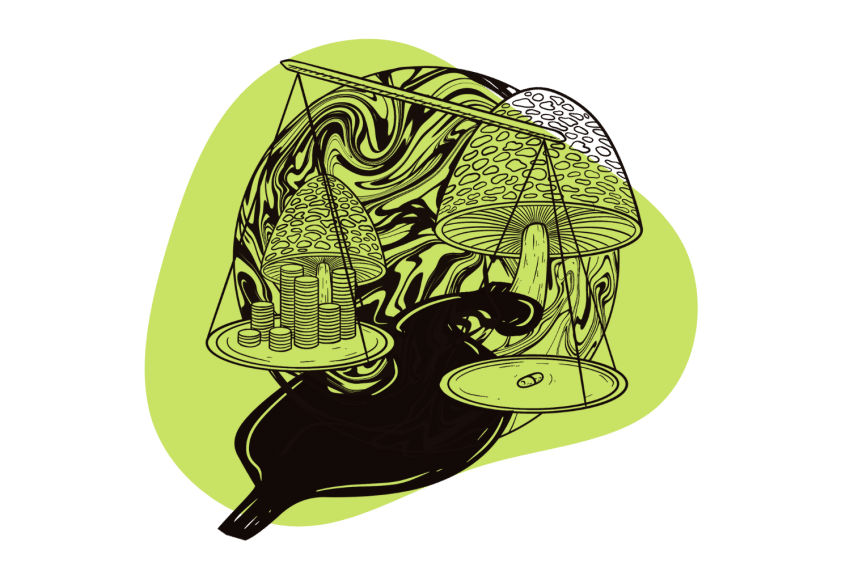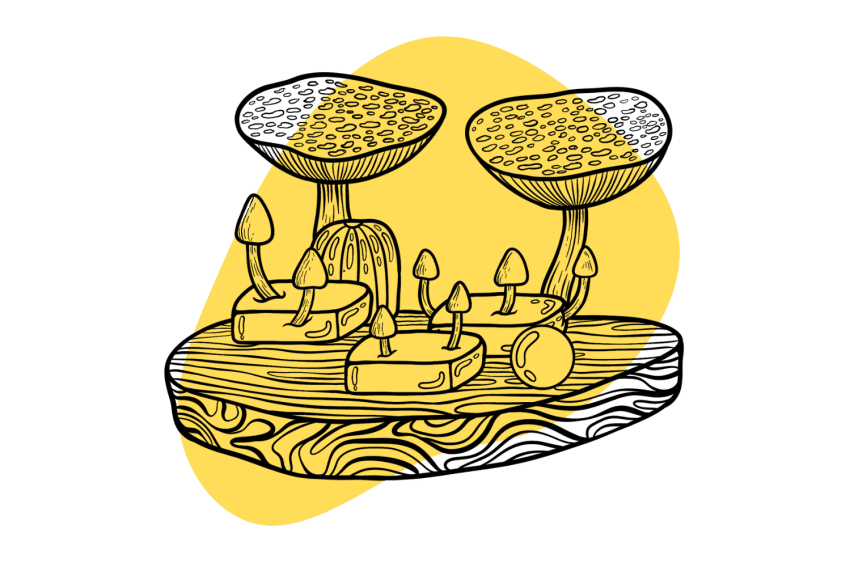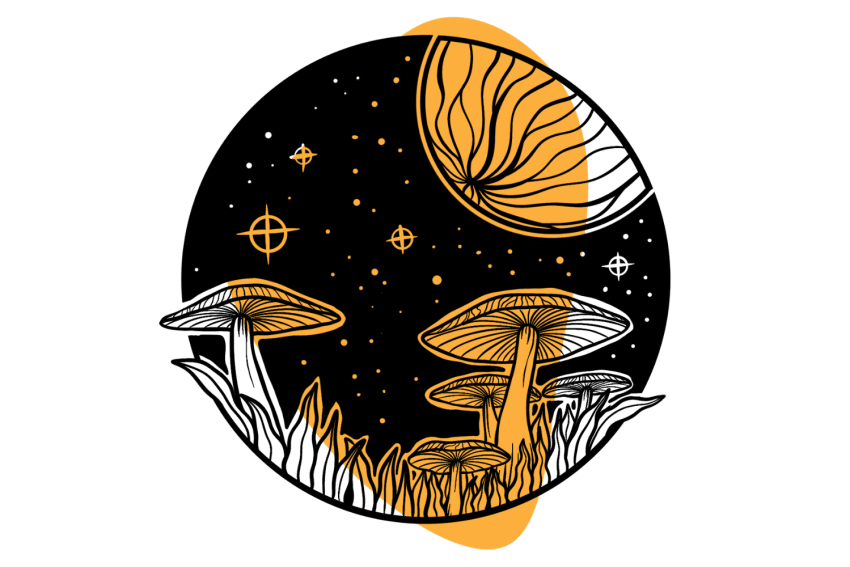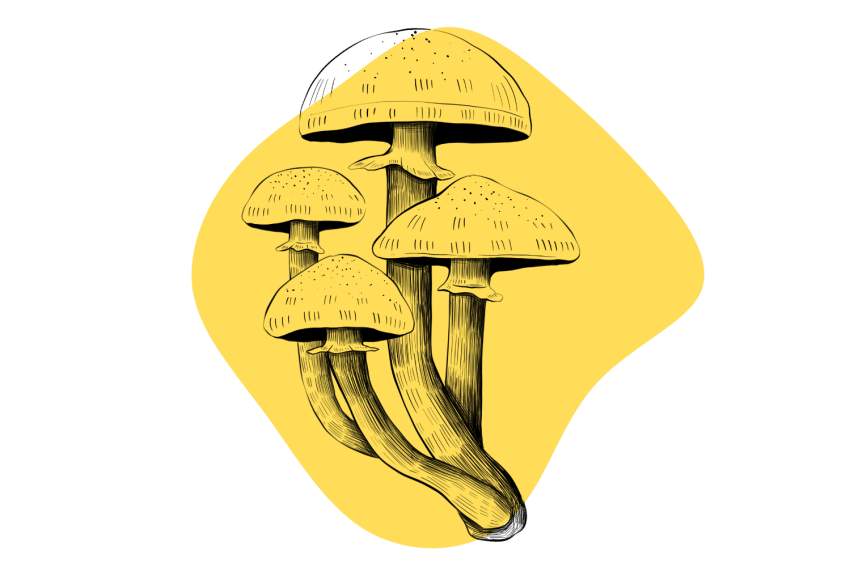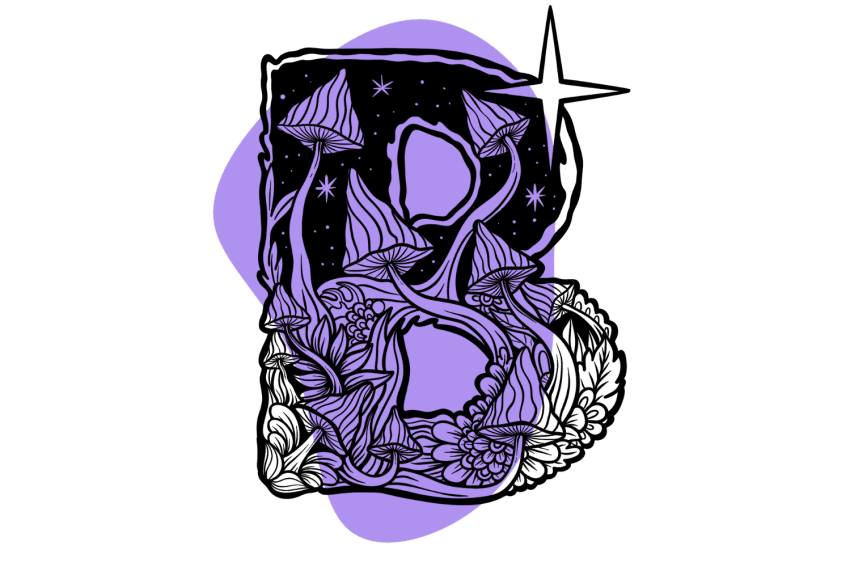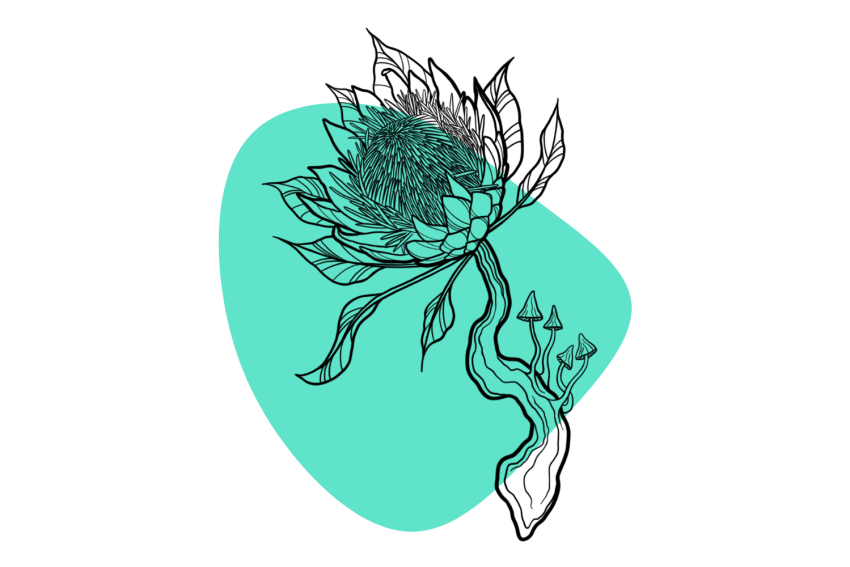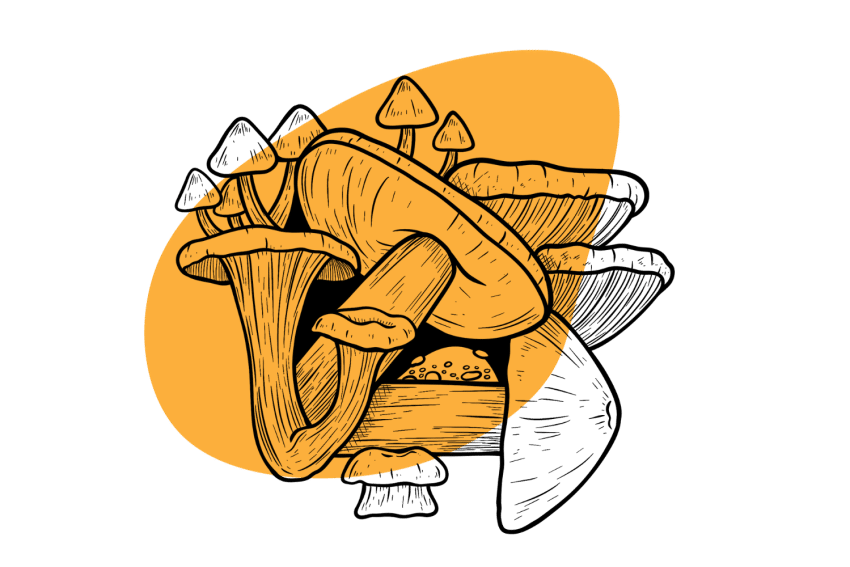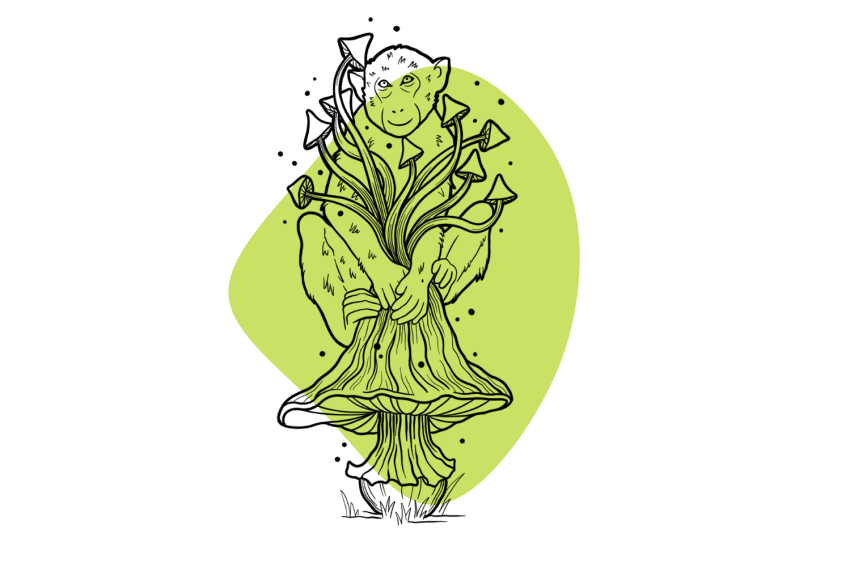Dancing Tiger Mushroom Strain: Euphoric & Energetic
The Dancing Tiger strain isn’t very visual, but it’s great if you want something light and fun.
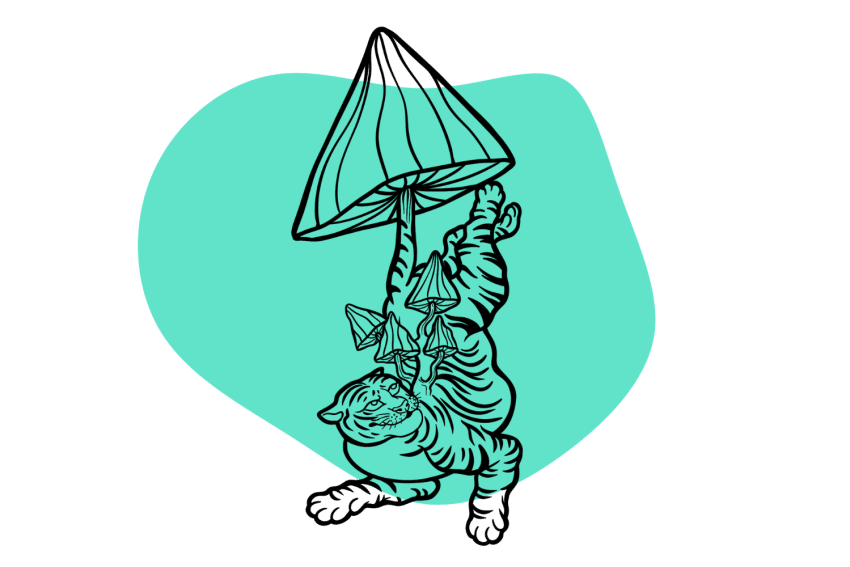
Dancing Tiger is a resilient strain of Psilocybe cubensis from Southern China that produces thick flushes of medium-sized mushrooms with domed caps that are chestnut to golden-brown. The caps eventually flatten out in maturity and often have distinct “oatmeal-like” warts covering them. The stems are white with a yellowish hue and are somewhat wavy.
These shrooms don’t produce much visual stimulation — except at high doses — but they’re known to invoke fits of laughter when used socially; the high is exceptionally euphoric and energetic.
Like most Asian strains, Dancing Tiger mushrooms are easy to grow. It’s fast to colonize substrate thanks to its aggressive mycelium and fast to fruit. This is a good strain for beginner cultivators to grow and a great choice for first-time psychonauts to consume.
Let’s find out more about this strain by looking at:
- The history of the Dancing Tiger strain
- The potency of the Dancing Tiger strain
- Where to buy Dancing Tiger spores
- Other Asian strains of Psilocybe cubensis
I’ll also answer a few frequently asked questions about Psilocybe cubensis and mushroom cultivation.
Dancing Tiger Strain Specs
| Potency | Average |
| Cultivation | Beginner |
| Species | Psilocybe cubensis |
| Substrate Recommendation | Rye Grain or BRF (Brown Rice Flour & Vermiculite) |
| Cost | $$ |
| Sold By | Ralphsters Spores, Sporeslab, Shiny Spores, The Magic Mushrooms Shop |
History of the Dancing Tiger Strain
The Dancing Tiger strain appeared on the Western spore market around 2007.
The original sample was collected from somewhere in the foothills of Southern China by a Chinese mycology student who described the fungus as “laughing-dancing mushrooms.”
An anonymous cultivator that goes by the name “Agar” sent a sample from China. The spores were then cultivated, domesticated, and distributed among the mushroom community. Since its introduction to the West, the Dancing Tiger strain has become quite popular.
Dancing Tiger mushrooms are available online and across Canada through several magic mushroom shops. Spore samples are also widespread, with many “major” spore vendors stocking them.
Dancing Tiger Mushrooms Potency & Tryptamine Content
The Dancing Tiger strain is rated “Average” in terms of potency. This strain is capable of producing somewhere in the region of 0.50% to 0.90% total tryptamines (psilocybin, psilocin, baeocystin, etc).
As of this writing, no one has entered Dancing Tiger samples into the Oakland Hyphae Psilocybin Cup, and we haven’t tested it for its tryptamine profile.
This strain produces strong sensations of euphoria and energy that move in waves throughout the body. It’s not a particularly visual strain unless you take 3.5 grams or more (dried weight).
Some people describe Dancing Tiger mushrooms as “laughing shrooms” — this could be due to their ability to induce hilarity when consumed socially.
Where to Buy Dancing Tiger Spores
Dancing Tiger is a relatively new strain on the market. However, several vendors are selling raw mushrooms and spore samples online. You’ll find Dancing Tiger spore prints, syringes, and swabs for sale from online spore vendors that ship to Canada, the United States, Europe, and the United Kingdom.
Here’s where you’ll find Dancing Tiger spore samples in your region:
- Canada: You’ll find Dancing Tiger spore samples for sale at Sporeslab.
- The United States: The best place to buy Dancing Tiger spores is Ralphsters Spores.
- The United Kingdom & Europe: You can find Dancing Tiger spore samples at Shiny Spores or The Magic Mushrooms Shop.
How to Grow Dancing Tiger Shrooms
The Dancing Tiger strain is quick to colonize substrates and is extremely contamination-resistant, so it’s easy to cultivate, even for beginners.
Dancing Tiger mushrooms grow well on BRF cakes (a mixture of brown rice flour, water, and vermiculite), but they’ll also do well on rye grain or birdseed. The easiest way to grow these shrooms is by using a cultivation method known as Psilocybe Fanaticus Technique — PF Tek for short.
PF Tek is a simple technique that involves the inoculation of substrate-filled jars. These jars are then left to form mycelium in an incubator before the resulting “mycelium cakes” are removed and fruited in a fruiting chamber. You can buy everything necessary from hardware stores, pet shops, and garden centers for a reasonable price.
Learn how to grow shrooms using PF Tek: How To Grow Magic Mushrooms: The Easy Way.
Does this all sound a little complicated? Why not check out The Top 5 Mushroom Grow Kits. These kits come complete with pre-inoculated spawn bags or tubs ready to fruit — growing shrooms is as easy as opening a box and waiting for the mushrooms to appear.
Other Asian Psilocybe cubensis Strains
Dancing Tiger isn’t the only strain from Asia — here are a few you might be interested in if you can’t find it or just want to branch out.
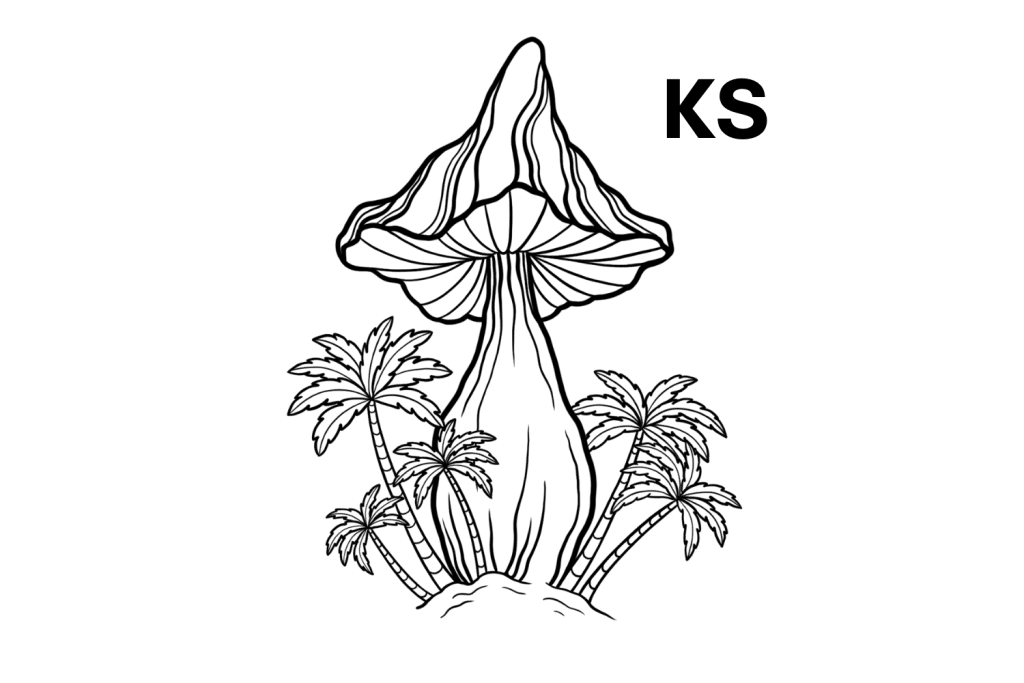
1. The Koh Samui Strain
The legendary mycologist John “Mushroom” Allen discovered the Koh Samui strain growing on the island of Koh Samui, Thailand, during his travels through Southeast Asia in the 1990s.
This strain is famed for producing “fatasses” — short mushrooms with thick stems. This strain is easy to grow thanks to its contamination and temperature resistance. Dense flushes of average-potency shrooms can be produced through cultivation, even by the beginner.
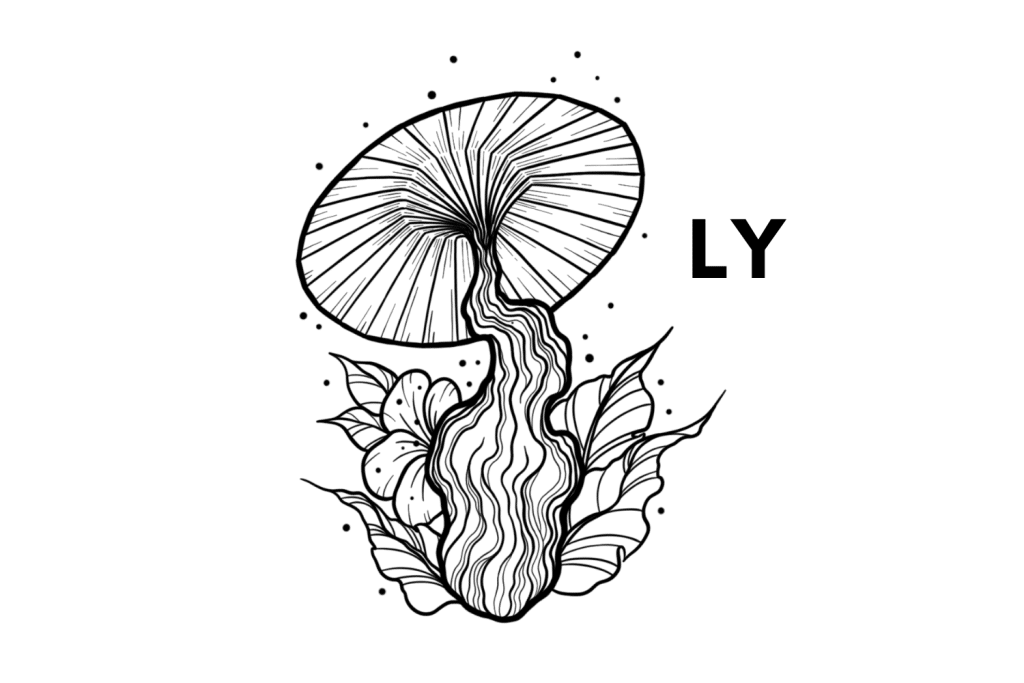
2. The Lipa Yai Strain
The Lipa Yai Strain is incredibly similar to the Koh Samui strain. Also discovered by John Allen during his 90s expedition to Southeast Asia, this Thai strain is a prolific fruiter and is easily cultivated thanks to its contamination resistance.
The Lipa Yai Strain produces tall, slender mushrooms with average potency — producing around 0.75% total tryptamine.
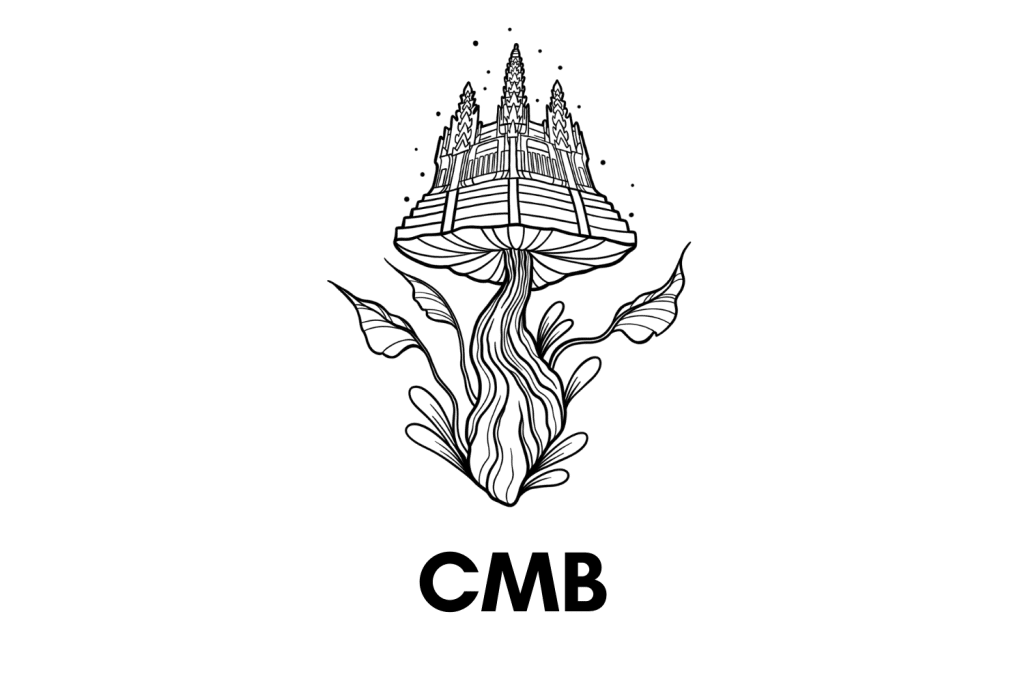
3. The Cambodian Strain
The Cambodian strain is yet another Southeast Asian strain discovered by John Allen. This strain is relatively weak in potency (producing less than 0.60% total tryptamines), but its high yield potential makes up for it.
The Cambodian strain is easy to cultivate thanks to its aggressive mycelium and contamination resistance. These mushrooms resemble Golden Teachers, with golden brown caps and white stems.
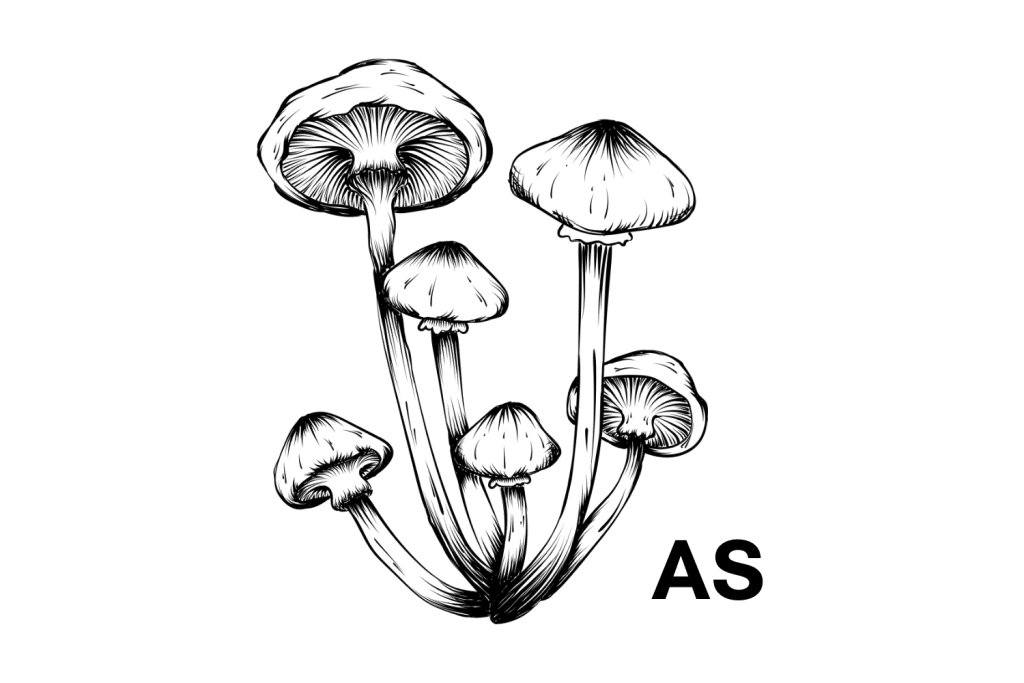
4. The Allen Strain
The Allen strain is named after (you guessed it) John Allen. This strain is popular among the mushroom community for its well-rounded nature. The shrooms produce average potency, are easy to grow, and have several dense flushes that give way to decent yields.
The Allen strain was originally discovered in Thailand, near Ban Tailing Ngam on the island of Koh Samui. It’s famed for its fast colonization speeds — colonizing around 10% to 20% faster than most P. cubensis strains.
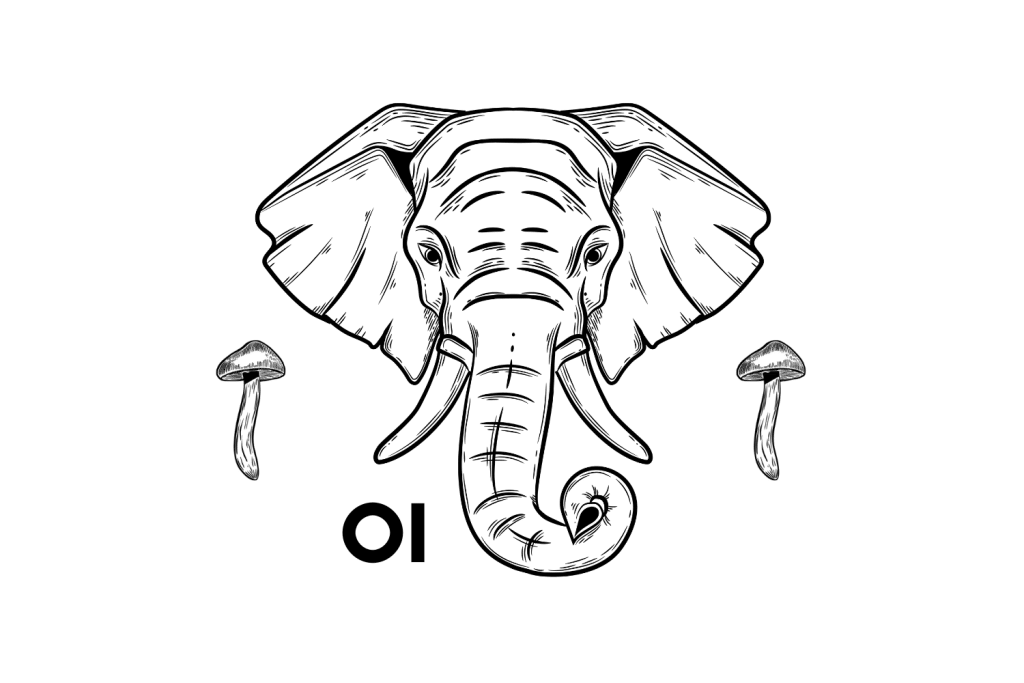
5. The Orissa India Strain
The Orissa India strain gets its name from its place of discovery — the Orissa region of India. This strain is famed for its impressively large fruiting bodies. Some cultivators have produced mushrooms with fresh weights as high as — grams.
The Orissa India strain is easy to cultivate and produces impressive tryptamine levels. The typical Orissa mushroom has an average total tryptamine content of over 1.80%.
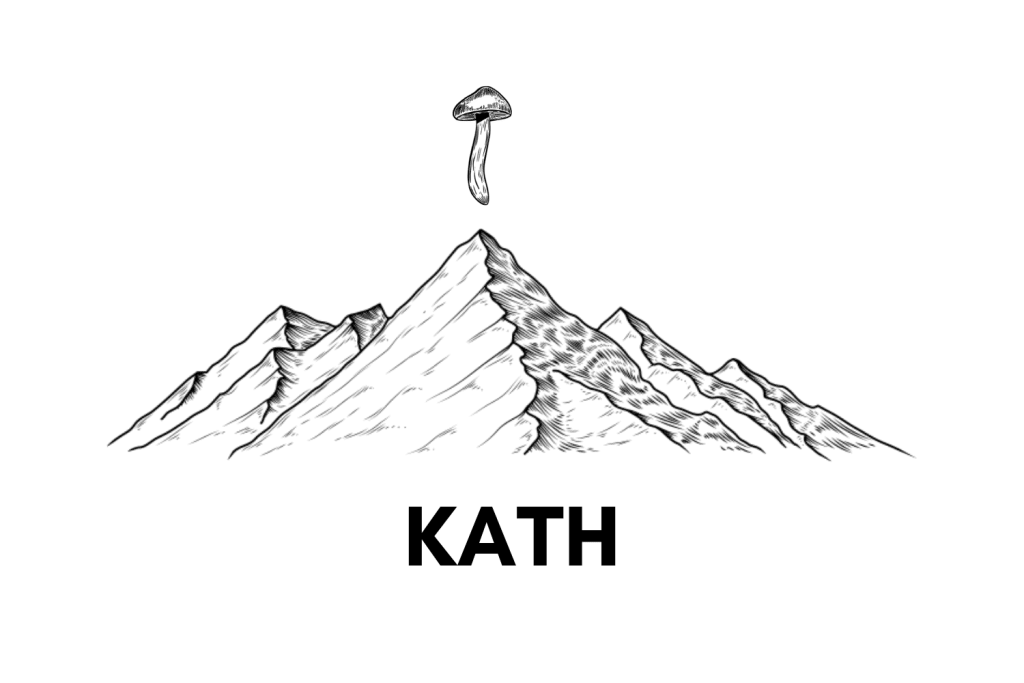
6. The Kathmandu Strain
The Kathmandu strain was found growing near Nepal’s capital — hence the name. Who first collected the Kathmandu strain is unclear. However, it’s believed that the mycologist and mushroom hunter John Allen collected it during his travels through Asia in the 90s.
This strain is relatively quick to colonize, resistant to contamination, and produces medium to large-sized fruits. It has above-average potency, with an average tryptamine content of 0.90% to 1.80%.
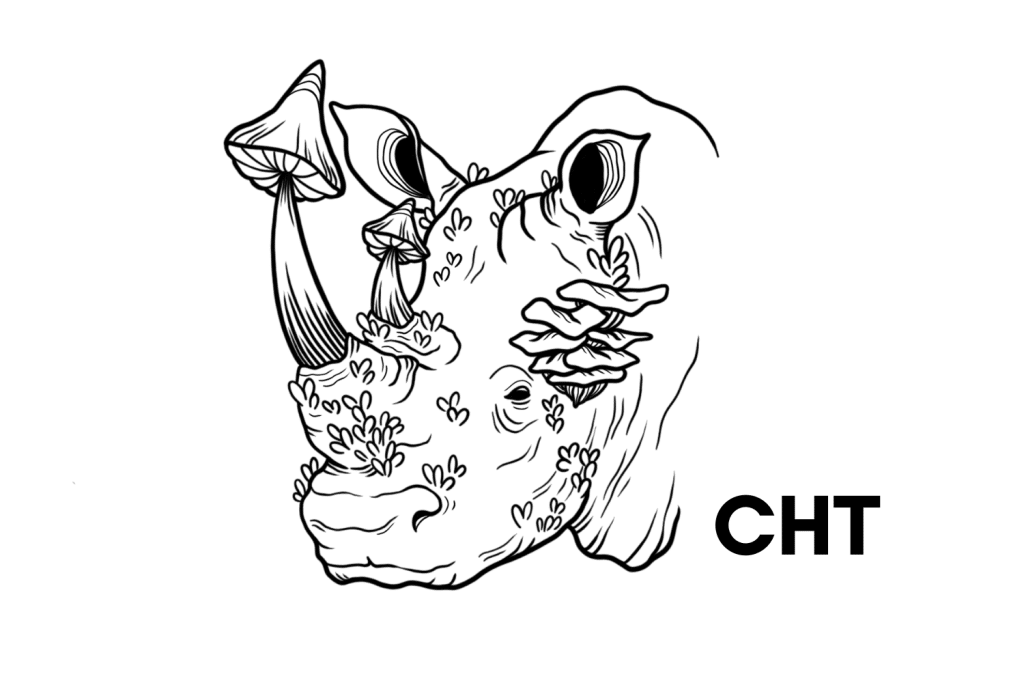
7. The Chitwan Strain
The Chitwan strain is a well-balanced Nepalese strain discovered by John Allen. It produces medium-sized fruits over several dense flushes, is resistant to contamination, and can be grown by beginners.
Chitwan shrooms have above-average potency, producing somewhere in the region of 0.90% to 1.80% total tryptamines.
Frequently Asked Questions About Shrooms
We get tons of questions, so I’ll answer a few of the most common ones next.
1. How Many Strains of Psilocybe cubensis Exist?
There are over 100 different strains of Psilocybe cubensis, all with different growth characteristics and tryptamine levels. Some strains are highly potent, like Penis Envy, while others are more suited to microdosing, such as Hillbilly.
Psilocybe cubensis strains can vary drastically in appearance. Some strains produce albino (non-pigmented or leucistic fruits (low-pigmented,) such as Avery’s Albino and White Rabbit. Other strains produce “fatass” mushrooms that are short, wide, and bulbous, like the Koh Samui strain, and others look like “typical mushrooms” such as Golden Teacher.
If you want to learn more about Psilocybe cubensis strains, check out our “Magic Mushroom Strain Guide (100+ Strains Explained).”
2. What’s the Easiest Asian Strain of Psilocybe cubensis to Grow at Home?
Most strains from Asia are easy to grow. They tend to have excellent contamination resistance and aggressive mycelium. Most can thrive in unoptimized environments, making them perfect for beginner growers and cultivators who don’t have the time to get everything perfect.
Strains from Southeast Asia seem to be the easiest to work with. The Lipa Yai and Koh Samui strains are extremely easy to grow. They have excellent contamination resistance and can grow in an unoptimized environment, making them perfect for beginner growers.
The Allen strain is also one of the easiest Southeast Asian strains to grow, thanks to its aggressive mycelium, fast colonizing times, and contamination resistance.
3. Can You Grow Psilocybe cubensis Outdoors?
Yes. You can grow Psilocybe cubensis outdoors. Although growing this species inside is more popular because it provides better control over the growing conditions, it’s possible to get a patch growing in your backyard. However, the conditions must be right for mushroom growth.
There are a few vital factors to consider when growing Psilocybe cubensis mushrooms outdoors:
- Climate — The climate in your region must be suitable for Psilocybe cubensis. This is a pan-tropical species that thrives in warm, humid environments. If you live in a cold or arid climate, this species is best grown indoors in an artificial environment. Check to see if Psilocybe cubensis grows naturally in your region — if it does, then you should be able to cultivate them outdoors.
- Substrate — Naturally, Psilocybe cubensis grows in dung or nutrient-rich, organic soils. Compost and manure-based substrates are best for cultivating this species outdoors. The substrate must also have adequate drainage but be kept moist.
- Contaminants and Competing Fungi — Outdoor cultivation is more susceptible to contamination from other molds and fungi. You’ll need to take measures to protect the growing area from contamination. You won’t be able to keep everything 100% sterile, but covering the substrate with a breathable membrane while the mycelium forms will give the mycelium a chance to take hold before another competing fungi species takes over.
Related: Where Do Shrooms Grow? How to Find Magic Mushrooms in the Wild.

